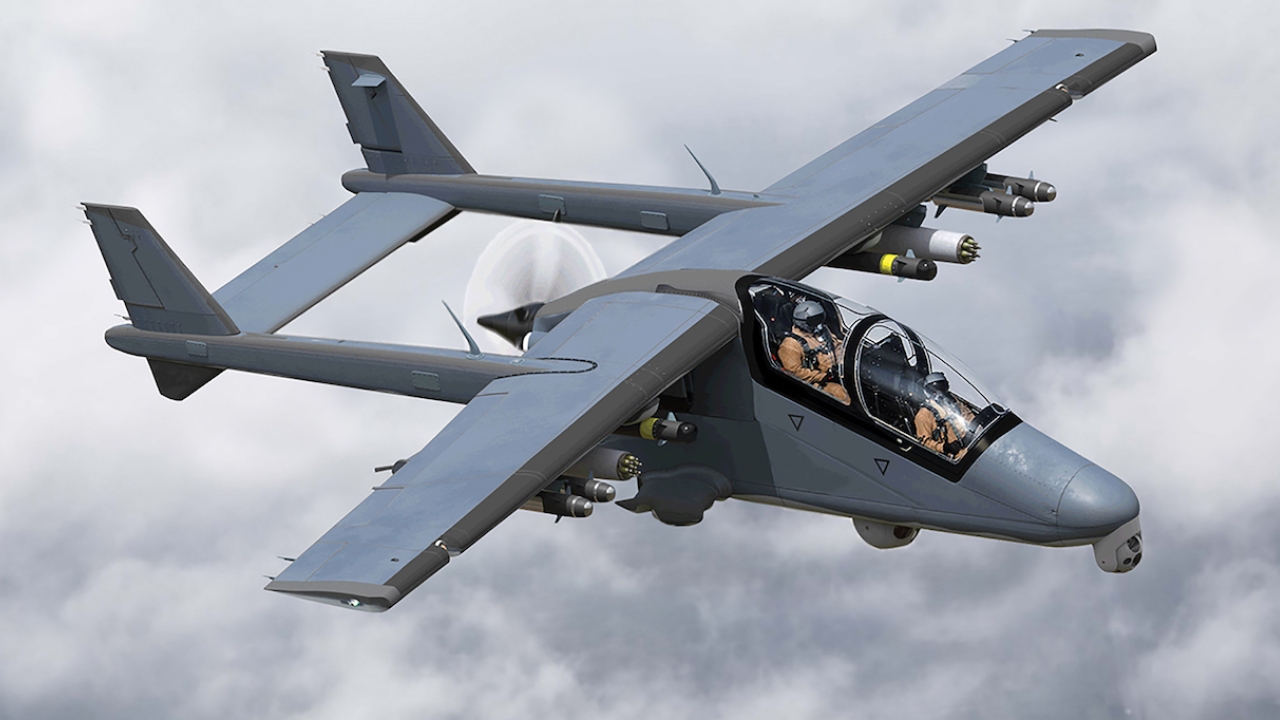AHRLAC logs 50 incident-free flying hours

The flight test programme is expanding the aircraft’s flight envelope in key performance areas including handling, airframe systems, centre of gravity, performance ranges and rough field capabilities.
Commenting on the achievement Paramount chief executive Ivor Ichikowitz said: “This is a proud moment for Paramount and the AHRLAC team of engineers and technicians who have invested so much of their creativity, energy and ‘can-do’ mentality to develop this aircraft. It is also a proud moment for South Africa and the rest of the African continent to showcase our aerospace capability through innovative design, technologies and manufacturing processes”.
AHRLAC's 50 hour milestone coincides with its nomination for Aviation Weeks’ Laureate Awards, which were conceived over 50 years ago to recognise the extraordinary achievements of individuals and teams in aviation, aerospace, and defence. Their accomplishments embody the spirit of exploration, innovation, vision, or any combination of these attributes that inspire others to strive for significant, broad-reaching progress in aviation and aerospace.
Paramount Group Executive Chairperson, Ivor Ichikowitz, says: “We are excited that AHRLAC is being recognised at the highest levels of the global aviation and defence industry. This is a proud moment for Paramount and the AHRLAC team of engineers and technicians who have invested so much of their creativity, energy and ‘can-do’ mentality to develop this unique aircraft. But it is also a proud moment for South Africa and the rest of the African continent to showcase our aerospace capability through innovative design, technologies and manufacturing processes.”
Test flight team leader Blokkies Joubert said AHRLAC had proven itself to be reliable with a rugged, solid feel.
“The aircraft’s performance has matched all our initial predictions closely and its systems have performed as they should. AHRLAC has shown itself to be predictable, intuitive and easy to fly, a true testament to the aerodynamic work done in the early stages of development. Control inputs in flight are light and direct, with a very accurate and quick response,” Joubert said.
The aircraft addresses a key industry need by performing the combined tasks that previously required four separately configured aircraft. It integrates designs from surveillance platforms and reconnaissance aircraft with the ability to carry surveillance, weapons, radar and electronic warfare systems. This has brought advanced operational solutions, historically requiring more costly aircraft or complex unmanned aerial surveillance systems.
“Operationally, the aircraft is reliable and easy to fly and maintain. AHRLAC’s predictable nature, remarkable exterior view and the ease with which it responds are outstanding features. Every member of the development team believes AHRLAC is the best answer to the problems it was designed to solve. The first 50 flight hours thus far have reinforced this,” Joubert added.
Ichikowitz believes AHRLAC is a ground-breaking example of what Africa is capable of producing and will be a key solution to bolster Africa’s capability to deal with its security issues. AHRLAC, he said, is not only a solution for Africa, but for defence forces around the world, whether from developing countries or from nations with advanced and sophisticated defence capabilities.
The aircraft was designed and built by a team of 60 engineers and technicians. One of the most innovative aspects of the construction phase is that 98% of all 6,000 parts of the airframe were designed and produced locally by the engineering team. Since the launch of the project in September 2011, the team spent 315,000 labour hours completing detailed designs and manufacturing the first prototype.
“AHRLAC is creating the next generation of engineers on the continent and is an excellent reflection of the capabilities of African engineers. There are a number of skills challenges in South Africa and beyond our borders but the progress made by local engineers has put them at the forefront of global aerospace innovation. Their joint expertise has turned them into pathfinders, who are proudly setting new milestones, through continuous innovation that we can export to the world,” Ichikowitz said.
Stay up to date
Subscribe to the free Times Aerospace newsletter and receive the latest content every week. We'll never share your email address.

